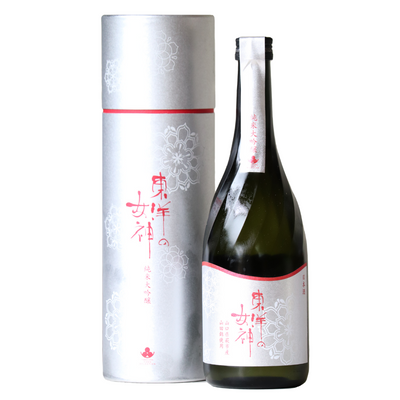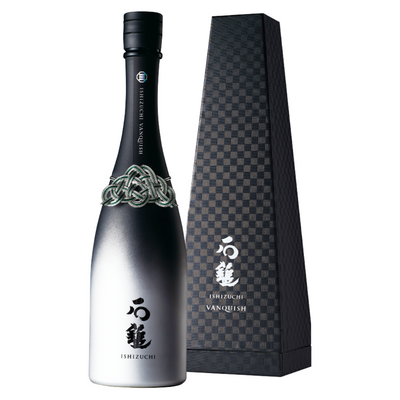Part 2: What is sake made of?
The main ingredients of premium sake are usually mentioned as three or four, namely white rice, Koji mold, water, and optionally brewer’s alcohol. However, there are two other essential ingredients, namely yeast, which provides a lot of the flavor of sake, and lactic acid, which has been added to most sake since the early 20th century.
While all the ingredients are of course important and do impact the flavor, sake production is much less ingredient-driven than wine, for example. Similar or the same ingredients can result in widely different sake, depending on the choices made during the production method as well as the polishing rate of the rice.
Territoriality is also only weakly linked to the taste of sake, with most differences in regional sakes coming not from the locally grown rice, for example, but again from choices made during the production, with the aim usually being to achieve a balance between the sake and the regional cuisine. This is emphasized by the fact that often rice is grown in a different province and shipped around the country before being brewed, rather than cultivated by the brewer. This trend is slowly changing however, and it's not to say that the ingredients don't play a large role.
White rice
Sake is in a unique position in that it is made from the main staple food of the Japanese, unlike wine for example. This has influenced sake in many ways throughout its history, namely in WW2 when, due to the shortage of rice, purity limits on sake being made only from rice were lifted. This was a big reason why decades later sake got a bad reputation and was sidelined by consumers in favor of wine and other “foreign” drinks. But more on that in our *history of sake* (insert link).
Though rice is a perennial plant, it is regrown every year: planted in spring, tended to over the summer, and harvested in autumn. In contrast to wine grapes, which are mostly grown by the winery itself, sake rice is usually made by rice farmers, who deliver the rice to the sake brewery after a period of storage. In fact, until 2004 it was illegal for breweries to also grow their own rice (again, more on that in our *history of sake*)!
While all kinds of rice could technically be used to make sake, almost all sake is made from short-grained (Japonica rice). Japanese table rice is most commonly used to make sake, but usually only the non-premium versions. For the best sake, special sake rice is used that is more suitable for the sake-making process. This rice is designed to cleanly separate the starch from the proteins and other undesirable parts of the rice grain. Common attributes are:
- Sake rice contains more protein than table rice
- Sake rice has a well-defined starch core at the center
- Sake rice is larger-grained, and therefore less likely to break during polishing
While there are over 100 sake rice varieties, Yamada-Nishiki, grown mainly in Hyogo prefecture, and Gohyakuman-Goku, grown mainly in Niigata prefecture, contribute to more than half of the sake rice production. Other popular varieties are Miyama-Nishiki and Omachi.
Koji mold
Koji is the magic ingredient in Japanese cuisine. It is the key in making soy sauce, miso paste, shochu, and of course also sake.
The enzymes in the koji mold not only break up the starch into sugar, which can then be converted into alcohol by the yeast, but they also provide a lot of flavor and acidity to the sake. Usually, 15-25% of the rice is used to make koji, and because of the delicate nature and the need to control temperature and humidity, the process is undertaken in a special room, the Koji-Muro.
There are three types of koji; white, black, and yellow, with only the latter being used for sake. A new generation of brewers is experimenting with black and white koji types, which are much more acidic in nature, and are creating fantastic products that fit well with seafood and oysters (check out our selection of black and yellow koji sake here).
Water
Since rice, unlike grapes, doesn't contain enough liquid to make a beverage, and since water thus needs to be added to make sake, breweries are usually located close to freshwater sources.
The taste of the water itself doesn’t impact the sake in a large way, but the mineral content (or hardness of the water) does. The higher the calcium and magnesium content of the water, the faster the fermentation process, which impacts the style and taste of sake dramatically. Nowadays mineral content in water can be adjusted but historically the areas with hard water (like Nada in Hyogo) flourished because their sake was very popular.
One famous origin story of the discovery of the importance of water revolves around a brewmaster who owned two locations, and one of which produced better sake. He tried everything imaginable until finally he even shipped the water from one place to the other.
All that changed of course with the modern Ginjo method of making sake, invented in Hiroshima, which requires rather soft water to coax out the intensive tropical fruit flavors that are the signature of Ginjo and Daiginjo.
Distilled alcohol
As an optional (but usual) ingredient, brewers can add a small amount of distilled alcohol, called Jozo alcohol, at the end of the brewing process. The aim is not to make sake stronger or to increase the yield, but to create a different flavor profile. Most sake nowadays includes this brewer’s alcohol, the addition of which results in a lighter-bodied brew. Sake that is produced without the brewer's alcohol is called Junmai, or “pure rice” and is usually more full-bodied and complex.




